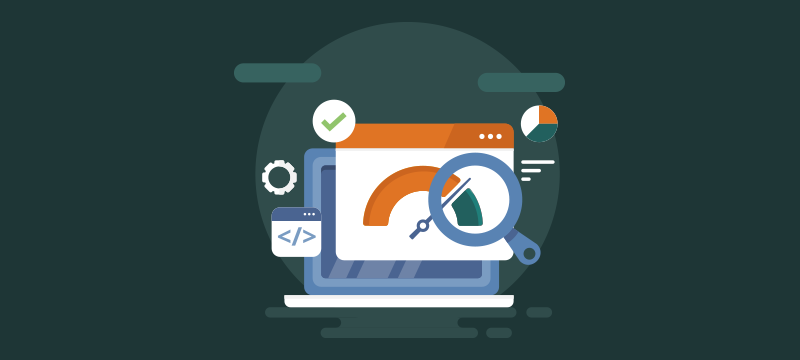
Website speed and performance matter. And nothing turns customers away from an online store faster than a slow website. One may face negative reviews on reputation and user experience as a result of a website that is functioning poorly, which may ultimately cost you, visitors, sales, and profit.
If you are experiencing a slow or poorly performing website then you can follow the top 9 tips that have been highlighted in this post.
1. Choose an appropriate web hosting plan
Web hosting is one of the few disregarded aspects of website performance and speed. Shared hosting is cheap and quick to set up. Hence, it is the go-to choice for most businesses. However, shared hosting cannot guarantee website performance due to limited bandwidth, resources, and technological setup.
In a lot of ways shared hosting package won’t work if your website receives a lot of traffic and demands heavy data. A better option would be to choose a VPS hosting plan.
Also, apart from a web hosting plan, it is best to purchase a quality hosting solution from a reputable web hosting provider.
2. Benefit from browser caching
Caching enhances your website speed without causing any destruction. That will not only lead to noticeably quicker performance but will also lighten the burden on your hosting account.
Activate browser caching so that users can save a few of the website’s static files on their computers and smartphones temporarily. This will be helpful because performance on subsequent visits will be substantially quicker since the website will not have to reload every time a user visits it.
3. Utilize CDN (Content Delivery Network)
One of the best ways to increase the website functionality and load time of your website is By streamlining the distribution of your website’s static files like CSS, fonts, photos, and JavaScript, a content delivery network (CDN) will send your website’s content to users globally at lightning speed.
4. Picture size optimization
We must sub-maximize pieces in order to optimize the total. The performance of your website can also be increased if you optimize certain parts of it. A picture is one such element. Websites with a lot of graphics can use apps like Canva, PicMonekey, and Adobe Photoshop to compress their image files.
Verify that you are also using the right file type. For colorful photos, JPG is advised, while PNG is for simple graphics.
6. Codify for mobile-first
For those who are unaware, the phrase “mobile-first” refers to the process of creating and organizing a website’s mobile version before its desktop counterpart.
Your website could:
- Speed up more quickly on all devices
- Make a huge difference in backward compatibility
- Enhances the overall visitor experience on your website.
Request that your tech expert develops your business website’s code with mobile devices first and then configure it to desktop devices.
7. Reduce the website’s scripts
Another effective strategy for enhancing the functionality and speed of websites. Tech experts frequently employ comments, space, and popular variables when creating HTML, JS files, and CSS files for the website in order to make the code and the markup area easier and more comprehensible for them.
Although it is advantageous during the creation stage, when it comes to serving the website, it automatically becomes a disadvantage.
Placing comments, space, and popular variables the website creates extra network traffic. You can eliminate this by ensuring that the web developer removes any additional scrips, comments, and space, and reduce the length of variable names in the HTML, CSS, and JS files.
Almost up to 60% of the website load can be reduced with minification.
8. Update your plugins and software
Several websites are reportedly put at risk by possible cybercriminals and bots due to obsolete plugins and software. For the sake of your website’s stability and safety, you must update them to the most recent versions. Give this the highest priority. Frequently check the website for updates and upgrades. To enhance website safety, you can include an update notification plugin.
9. Repair faulty URLs
Broken links can harm your websites, regardless of SEO or website performance. Your website’s crawl budget might be pointless if it has too many broken links, which leads to search engine ranking sites indexing other important websites and ultimately cost you, visitors.
Also, consumers may assume that your website is not being adequately maintained if there are faulty URLs. Similar to how slow-loading pages increase the bounce rate of your site, this can turn potential consumers away.
You can manually fix a broken URL or utilize a plugin. Additionally, you might want to check if your website has a misconfigured .htaccess file, as this can occasionally lead to broken links.
10. Remove any unused plugins
Not every plugin is created equally. An excessive number of plugins might weigh your website and slow it down. Furthermore, an old or poorly managed plugin may be a safety risk and cause performance problems due to compatibility difficulties. One of the simplest methods to accomplish this is by deactivating and removing any plugins you are not using right now.
Also, it is advised to check your already installed plugins to see if they are genuinely required. Certain tools may have features and performance that overlap, while others may no longer be necessary for your purposes.
Conclusion
In the end, speeding up page loads helps your website’s SEO, performance, and user experience. You can reduce your page load time using a variety of techniques as stated above.
You can use plugins to optimize your pictures, lower your loading scripts, and minify your site’s assets in addition to using a CDN and caching your pages.
Choosing a web hosting service that is performance-optimized can also significantly affect how quickly your website loads.